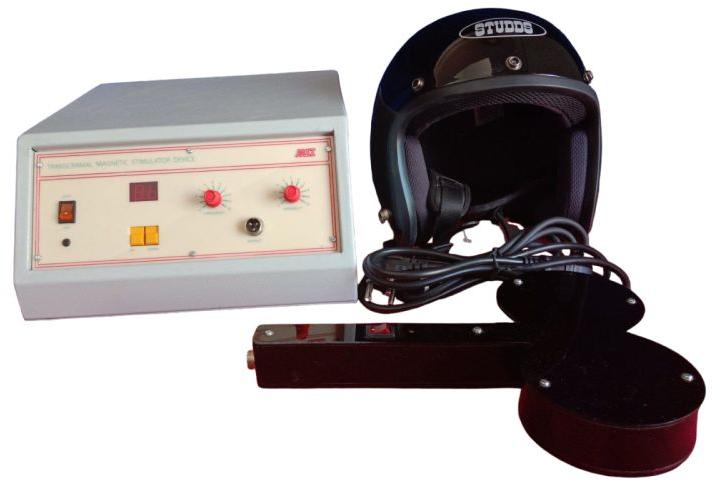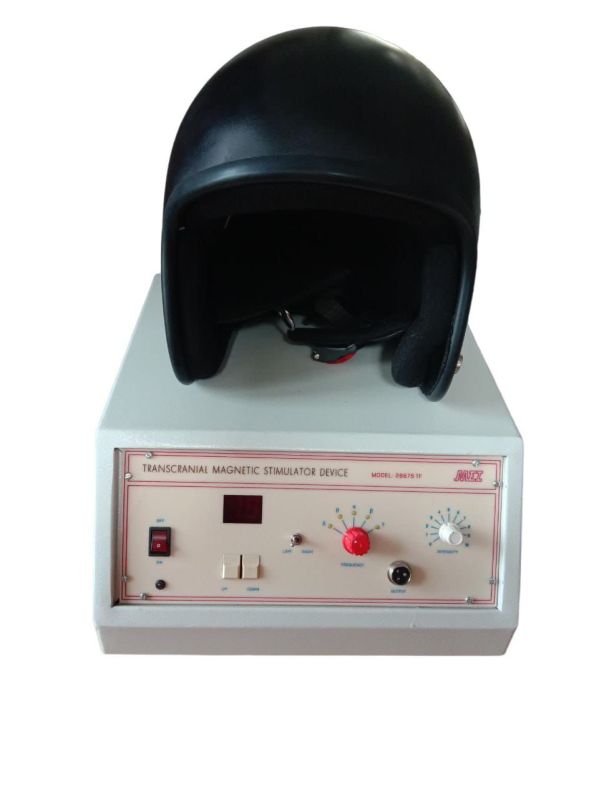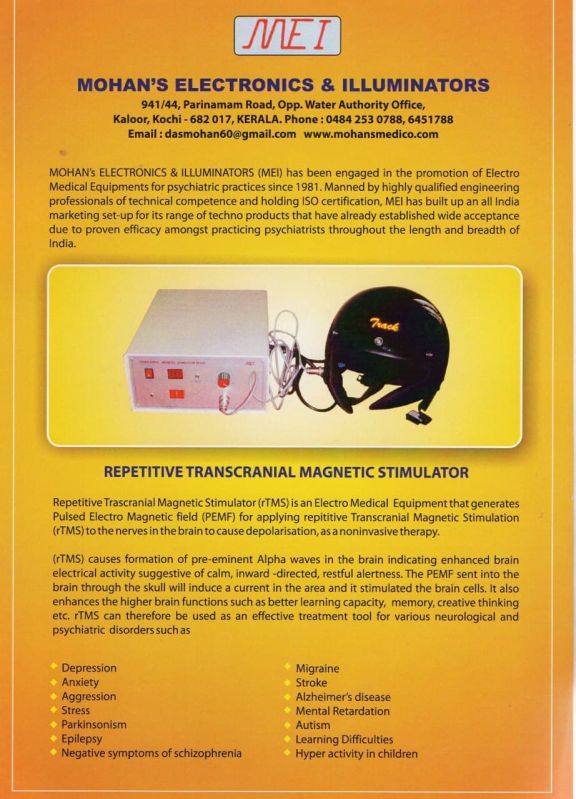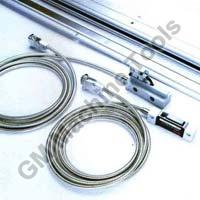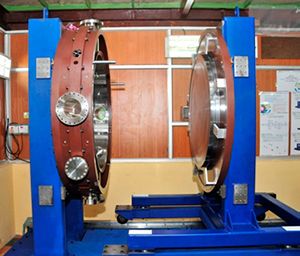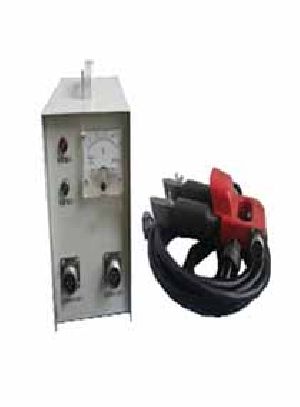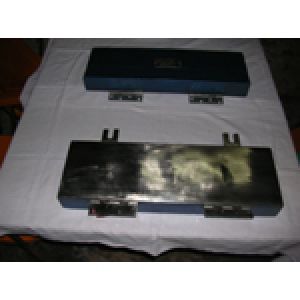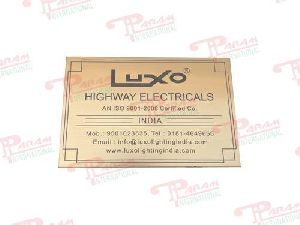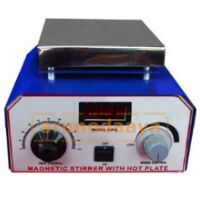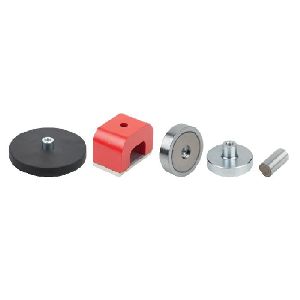Listing ID #1472627
Company Information
Ask for more detail from the seller
Contact SupplierTranscranial magnetic stimulation (TMS) is a noninvasive method to cause depolarization in the neurons of the brain. TMS uses electromagnetic induction to induce weak electric currents using a rapidly changing magnetic field; this can cause activity in specific or general parts of the brain with minimal discomfort, allowing the functioning and interconnections of the brain to be studied. A variant of TMS, repetitive transcranial magnetic stimulation (TMS), has been tested as a treatment tool for various neurological and psychiatric disorders including migraines, strokes, Parkinson's disease, dystonia, tinnitus, depression and auditory hallucinations.
Effects on the brain
Other adverse effects of TMS are:-
Therapy
The investigators concluded :
"Although the treatment effect was statistically significant on a clinically meaningful variable (remission), the overall number of remitters and responders was less than one would like with a treatment that requires daily intervention for 3 weeks or more, even with a benign adverse effect profile". However, a review of the trial's report has questioned the adequacy of the placebo, noting that treaters were able to guess whether patients were receiving treatment with active or sham TMS, better than chance.
FDA actions and responses
In January 2007 an advisory panel of the United States Food and Drug Administration (FDA) did not recommend clearance for marketing of an rTMS device, stating that the device appeared to be reasonably safe but had failed to demonstrate efficacy in a study of people with major depression who had not benefitted from prior adequate treatment with oral antidepressants during their current major depressive episode. The panel agreed that "unblinding was greater in the active group, and considering the magnitude of the effect size, it may have influenced the study results." However, the FDA determined in December 2008 that the rTMS device was sufficiently similar to existing devices that did not require a premarket approval application and allowed the device to be marketed in accordance with Section 510(k) of the Federal Food, Drug, and Cosmetic Act for "the treatment of Major Depressive Disorder in adult patients who have failed to achieve satisfactory improvement from one prior antidepressant medication at or above the minimal effective dose and duration in the current episode". The user manual for the device warns that effectiveness has not been established in patients with major depressive disorder who have failed to achieve satisfactory improvement from zero and from two or more antidepressant medications in the current episode and that the device has not been studied in patients who have had no prior antidepressant medication.
Response to FDA decision
Soon after the FDA cleared the device, several members of Public Citizen stated in a letter to the editor of the medical journal Neuropsychopharmacology that the FDA seemed to have based its decision on a post-hoc analysis that did not establish the effectiveness of rTMS for the treatment of depression. The writers of the letter expressed their concern that patients would be diverted from therapies such as antidepressant medications that have an established history of effectiveness.
Technical information
TMS - Butterfly Coils : TMS uses electromagnetic induction to generate an electric current across the scalp and skull without physical contact. A plastic-enclosed coil of wire is held next to the skull and when activated, produces a magnetic field oriented orthogonally to the plane of the coil. The magnetic field passes unimpeded through the skin and skull, inducing an oppositely directed current in the brain that activates nearby nerve cells in much the same way as currents applied directly to the cortical surface. The path of this current is difficult to model because the brain is irregularly shaped and electricity and magnetism are not conducted uniformly throughout its tissues. The magnetic field penetrates only to a maximum depth of three centimeters into the brain, in the area directly adjacent to the coil.
Used To Treat :
Magnetic Belts
We present our clients, the Magnetic Belts. Sprains, spondylitis etc can be treated effectively with the help of the Magnetic Belt, manufactured by us. For best results, the Magnetic Belt should be worn for at least 5 hours in a day. Avail the Magnetic Belts at nominal rates from us.
